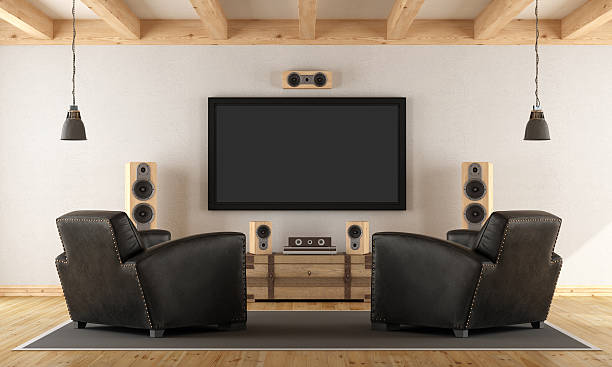When planning a modern connected environment, installing an audiovisual system California means more than simply mounting a screen and hooking up speakers. From signal routing to control interfaces, each detail affects reliability, performance, and user experience. In this guest post, we explore how to implement a high-quality AV solution — whether for a home theater, corporate boardroom, or multipurpose venue — and highlight key decisions you’ll want to get right.
Understanding the Core Components
An effective AV setup depends on several building blocks. Below is a breakdown of essential elements and tips for integrating them:
Displays & Projection
Choose displays or projectors appropriate to the room’s size, lighting, and viewing distance. For bright environments, higher lumen projectors or high-brightness LCD/LED screens help maintain clarity. Ensure resolution compatibility (4K, 1080p) and HDR support when needed.
Audio System Design
Sound quality hinges on speaker placement, room acoustics, and amplification. Use room measurements and acoustic modeling to optimize speaker locations and avoid nulls or echo. Multi-zone audio systems allow different areas to run independently.
Control & Integration
A control system (via touchscreen, keypad, or app) brings all AV devices under one interface. Good design ensures one-touch modes (e.g. “presentation,” “movie,” “mute”) so end users don’t wrestle with remotes or settings.
Signal & Cable Management
Choose shielded, high-quality cables (HDMI 2.1, fiber HDMI, or HDBaseT) to prevent signal loss. Labeling and a clean cable infrastructure simplify maintenance and upgrades. Use patch panels and conduit where possible for future flexibility.
Power & Environmental Considerations
Every AV component should have clean, stable power — using surge protection and isolation if needed. Factor in proper ventilation and cable slack for service. Humidity, dust, or heat can diminish performance over time.
Common Pitfalls & How to Avoid Them
Making mistakes in AV installation can cost time and money. Here are frequent issues and preventive strategies:
- Mismatch of system components
Connecting equipment with differing impedance or signal levels often leads to hiss, distortion, or dropouts. Ensure compatibility across all devices. - Poor room acoustics
No amount of speaker power compensates for reflective walls or parallel surfaces. Use diffusers, absorbers, and bass traps where necessary. - Overlooking user interface
Too many separate remotes or controls frustrate users. Build intuitive control presets for routine tasks. - Skipping testing & calibration
Always calibrate video (color balance, gamma) and audio (EQ, delay, levels). Unbalanced systems look unnatural or sound disjointed. - Neglecting future expansion
Leave spare conduit, cable pathways, and system headroom (in bandwidth, amplification) for upgrades down the line.
Best Practices for Successful AV Deployment
To get from concept to flawless operation, follow these best practices:
- Start with a needs assessment. Understand the client’s goals: Is the space used for movies, conferencing, presentations, or mixed use?
- Produce detailed design drawings. Include diagrams showing cable runs, rack layouts, and control logic.
- Mock-up or prototype where possible. Testing a small portion of the system can uncover integration issues early.
- Communicate with stakeholders. Involve architects, IT, interior designers, and end users in planning to avoid clashes.
- Phase implementation. Install power, infrastructure, and core systems first, then proceed to fine-tuning.
- Document thoroughly. Provide wiring schematics, system diagrams, and user manuals for handover.
- Offer training & support. After installation, walk users through basic operations and leave support pathways open.
Applications Across Environments
Here’s how the same AV principles adapt across settings:
- Residential: Home theaters, multiroom audio, smart home integration.
- Commercial Offices: Conference rooms, huddle spaces, digital signage, video conferencing.
- Education: Lecture halls, interactive whiteboards, classroom AV systems.
- Hospitality & Events: Ballrooms, banquet halls, houses of worship with scalable audio/video.
In each scenario, tailor the system to room acoustics, budget constraints, and scaling potential.
Why Local Expertise Matters
Implementing an audiovisual system requires not just technical mastery but local knowledge of building codes, mounting standards, power practices, and climate effects. A provider familiar with regional permit processes and environmental conditions can save time, avoid rework, and ensure a robust installation.
Conclusion
A well-designed audiovisual system California transforms how spaces entertain, communicate, and connect. Success lies in meticulous planning, component matching, user-friendly control, and room optimization. If you’re considering AV deployment in the Sunnyvale / Santa Clara County area (or anywhere in California), trust the proven local expertise of Alpha Omega Electric. Our team delivers solutions grounded in best practices, tailored to your needs, and backed by reliable support.

